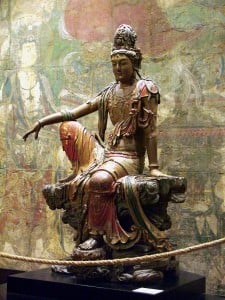By Masery
First posted to the Witches Voice in 2008 under the Order of the Elodrym’s profile which is no longer available. witchvox.com
A yearning to belong is a natural drive to fulfill a need for understanding and security. Traditionally magickal and mystical groups gathered for the sole purpose of study of and initiation into the occult. The growing interest in magick and mysticism as a way of life is creating a need for a broader sense of community. In order to evolve as an esoteric community we need spiritually oriented open groups and not just secret mystery schools. Open communities would include people who practice magick or spirituality in their daily lives but aren’t interested in formal training.
It is human nature to gather in groups. We instinctively know that there is safety in numbers and when we surround ourselves with intelligent people, we increase our ability to accomplish our goals. Communities are defined by similarities between members and the various traditions they share. A positive community welcomes diverse members as an opportunity to exchange new ideas. They challenge ways of thinking without being overly aggressive or confrontational. There is a difference between questioning someone’s ideas and using mental intimidation to prove a point or boost the ego. A healthy group’s members will enter into constructive dialog instead of pressuring new members into conforming to a group mind.

IMAGE: Photograph of symbols on the beach at Crackington Haven, North Cornwall. by Andy Tootell at Flickr CC license some rights reserved.
Leaders of dysfunctional magickal groups claim to be the only mouthpiece of a deity or to have exclusive access to special knowledge. These charlatans expect all members to obey them. They also require the group’s knowledge to be hoarded. A truly spiritual community acknowledges that each member has the ability to commune with Divinity without any intersession from a priesthood or leader. A spiritual community allows members to share their experiences openly with each other and will acknowledge the benefits of gaining knowledge from outside of the group.
Strong, compassionate communities offer members assistance and comfort in times of despair and celebrate with each other in times of joy. When there are difficult transitions such as career changes, family conflict, and death, a positive community will rally around the member and offer support. Instead of telling them what they “should” or “shouldn’t” do they will ask what needs to be done and offer advice if asked. They respect each individual’s decisions. Respecting each member’s free will; however, is balanced with the strength to step in when a member is behaving in a way that will harm the group or themselves. A circle of assistance can be created around that member to offer help. If they refuse, then that person has the right to learn from what is perceived as a mistake. Discernment is required to understand how dangerous the member’s actions would be for themselves and the group. There are times when a member and group must part ways with perhaps the understanding that the member may return when the destructive behavior has become more constructive.
Community’s role is to celebrate a member’s milestones. They cheer them on when successful. They gather to honor births, unions, birthdays and seasonal changes to mark life’s continuation. Fully experiencing joys together strengthens each member, empowering them to pull together as a group in more difficult times.
Another positive trait among groups is that they won’t demand monetary donations from members. However, a positive group will be made up of members willing to offer their resources, time, or money to the organizations. Like a hive of bees, each contributing to the whole to reap sweet rewards.
A healthy group dynamic can be set up by using Professor Muneera Spence’s seven rules for collaboration:
Look for common ground: look for shared personal experiences, listen and give feedback, accept differences in perception and opinions, uncover similar values, be open about who you are and expect the same of others
Learn about others: recognize their perspectives and needs, allow others to freely express themselves
Critique results, not people: make other people feel good, personal hostility is a waste of time, avoid put downs or criticizing a person instead of their ideas
Give and get respect: respect other opinions, be considerate and friendly, have some empathy, speak with confidence and tact
Proceed slowly: check for understanding and acceptance of each idea before moving on to the next.
Be explicit and clear: observe nonverbal communication, speak clearly, select meaningful words, share ideas and feelings
Remember the five “Cs” of communication: clarity, completeness, conciseness, concreteness, and correctness (2)
Just as community strives to offer a safe, welcoming place for individuals so too can individuals take action to create the type of community they desire. Peers of San Francisco Psychologist Dr. Leo Busgaglia approached him with a story about a man who committed suicide by jumping from the Golden Gate Bridge. The man’s note said, “I’m going to walk across the Bridge and if no one smiles at me, I’m going to jump.” The people thought Dr. Busgaglia would be stricken with sympathy. Instead he said, “I wonder how many people he smiled at.” (1) Community is a circle, not a straight line. Each individual must bear some responsibility. In a functioning community circle, a member willingly fills their neighbor’s cup; the next person fills the next cup, and so forth knowing their cup will always be refilled.
(1) Shaler PhD, Roberta “Where Your Soul is Welcome and Your Voice is Heard” Vision Magazine (August 2007)
(2) Spence, Muneera U. “Graphic Design: Collaborative Processes = Understanding Self and Others.” (lecture) Art 325: Collaborative Processes. Fairbanks Hall, Oregon State University, Corvallis, Oregon. 13 Apr. 2006.
Internet Resources
Stages of Group Development www.chimaeraconsulting.com/tuckman.htm
Group Dynamics and Community Building by Jerry Hampton www.community4me.com/faq_smallgrp.html
Psychiatrist Morgan Scott Peck en.wikipedia.org/wiki/M._Scott_Peck His biography, stages of spiritual development, and thoughts on community building.















